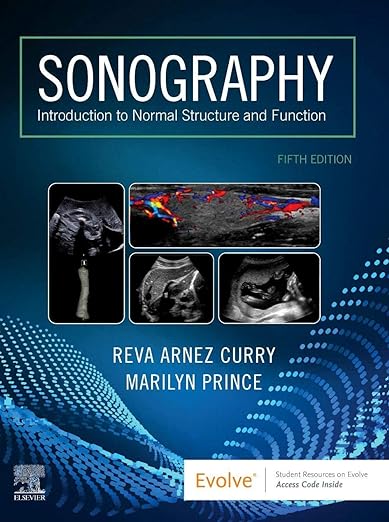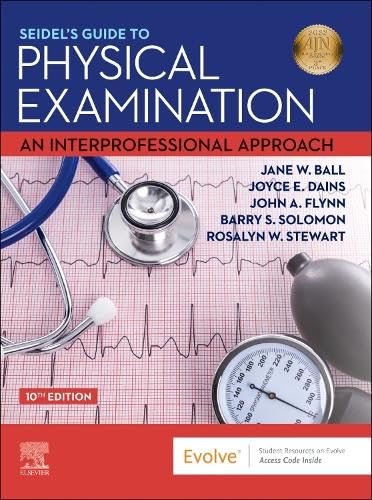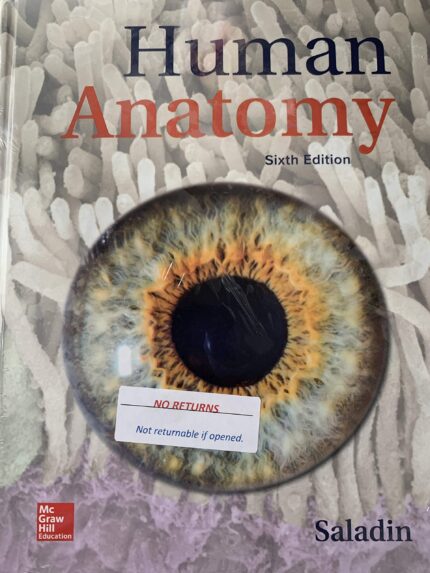Test Bank For Sonography 5th Edition Curry
(Sonography, 5th Edition, Reva Curry, Marilyn Prince) (Test Bank all Chapters)
Chapter 1: Before, During, and After the Ultrasound Examination Curry/Prince: Sonography, 5th Edition
TRUE/FALSE
1. The sonographer should always review available patient information.
ANS: T
A sonographer is responsible for acquiring patient information pertinent to the ultrasound study before the examination procedure.
OBJ: Describe the importance of reviewing the patient’s chart/EMR (electronic medical record) prior to the examination. TOP: Before the Ultrasound Examination
2. The sonographer should write technical observations of the ultrasound examination in the patient’s chart.
ANS: F
The sonographer’s technical observations serve as a reference for the interpreting physician. Written documentation of any type almost always becomes part of the patient’s medical
record. Final interpretation of the ultrasound images and technical observations is always the responsibility of the interpreting physician.
OBJ: Describe the importance of reviewing the patient’s chart/EMR (electronic medical record) prior to the examination. TOP: Before the Ultrasound Examination
3. The sonographer should always review the ultrasound request form.
ANS: T
The process of reviewing available patient information begins with the sonographer reviewing the ultrasound request form.
OBJ: Describe the importance of reviewing the patient’s chart/EMR (electronic medical record) prior to the examination. TOP: Before the Ultrasound Examination
4. The sonographer should always provide the interpretive report.
ANS: F
An interpretive report is a formal, legal report of the ultrasound findings by a sonologist, radiologist, or other interpreting physician. A sonographer should never provide diagnoses, because this would be unjustified and potentially legally compromising.
OBJ: Contrast technical observation and interpretive report. TOP: How to Describe Ultrasound Findings
5. Procedural consent forms are found in the patient’s chart. ANS: T
Consent forms for routine examinations, treatment, surgical procedures, medical procedures, and anesthesia are found in the patient’s chart.
OBJ: Describe the importance of reviewing the patient’s chart/EMR (electronic medical record) prior to the examination. TOP: Before the Ultrasound Examination
6. Laboratory values are part of the patient’s clinical history.
ANS: T
Laboratory values are part of the patient’s clinical history and usually are found in the patient’s chart.
OBJ: Describe the importance of reviewing the patient’s chart/EMR (electronic medical record) prior to the examination. TOP: Clinical History
7. A living will can be found in the patient’s chart.
ANS: T
If the patient has a living will, it is kept in the patient’s chart.
OBJ: Describe the importance of reviewing the patient’s chart/EMR (electronic medical record) prior to the examination. TOP: Before the Ultrasound Examination
8. Test results are found in the patient’s chart.
ANS: T
Reports from correlating modality studies are found in the patient’s chart.
OBJ: Describe the importance of reviewing the patient’s chart/EMR (electronic medical record) prior to the examination. TOP: Before the Ultrasound Examination
9. The ultrasound request form contains the patient’s identification number.
ANS: T
The ultrasound request form should include the patient’s identification data, the clinical symptoms, the type of examination requested, and the reason for the examination.
OBJ: Describe the importance of reviewing the patient’s chart/EMR (electronic medical record) prior to the examination. TOP: Before the Ultrasound Examination
10. The ultrasound request form contains the patient’s Social Security number.
ANS: F
The patient’s Social Security number is not included on the ultrasound request form.
OBJ: Describe the importance of reviewing the patient’s chart/EMR (electronic medical record) prior to the examination. TOP: Before the Ultrasound Examination
11. The ultrasound request form indicates whether the examination is a regularly scheduled exam or a “stat” exam.
ANS: T
Generally, the ordering physician checks a box on the ultrasound request for stat or portable sonograms.
OBJ: Describe the importance of reviewing the patient’s chart/EMR (electronic medical record) prior to the examination. TOP: Before the Ultrasound Examination
12. The ultrasound request form contains the patient’s history.
ANS: T
The ultrasound request form should include the patient’s identification data, the clinical symptoms, the type of examination requested, and the reason for the examination.
OBJ: Describe the importance of reviewing the patient’s chart/EMR (electronic medical record) prior to the examination. TOP: Before the Ultrasound Examination














Reviews
There are no reviews yet.